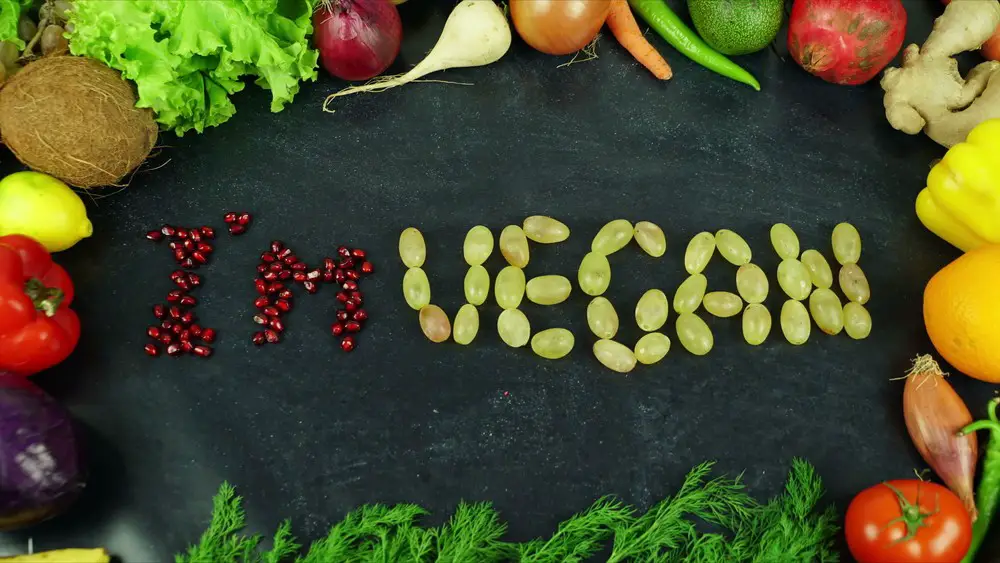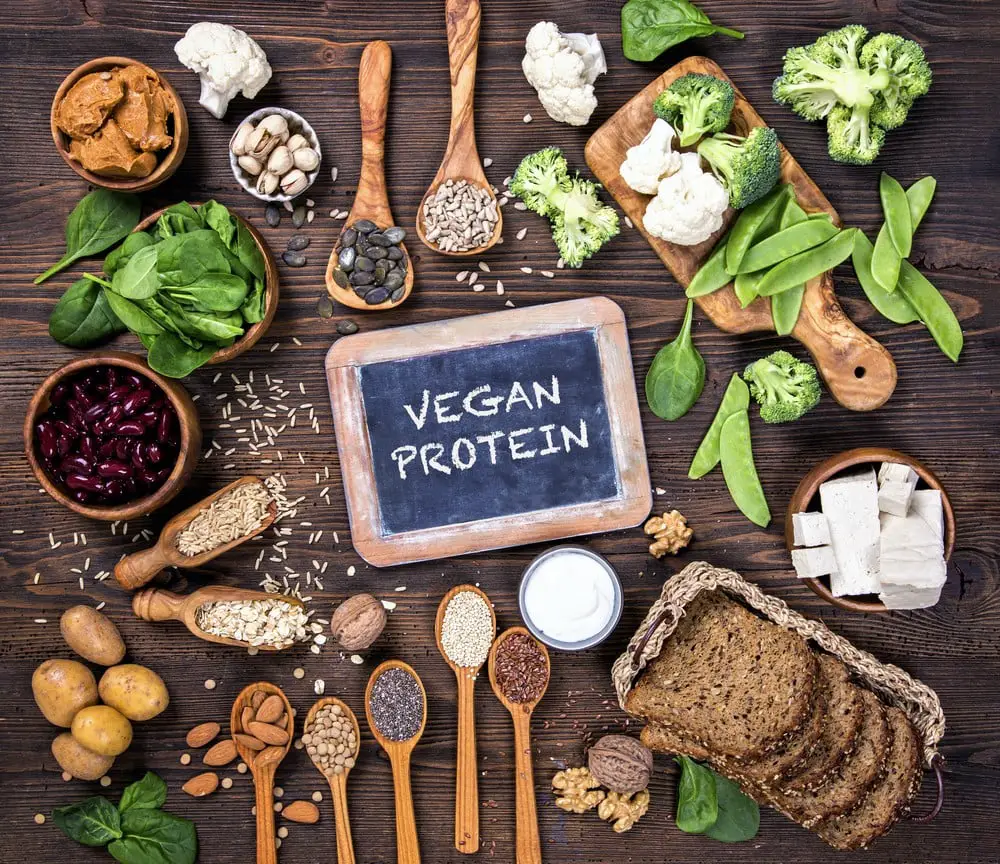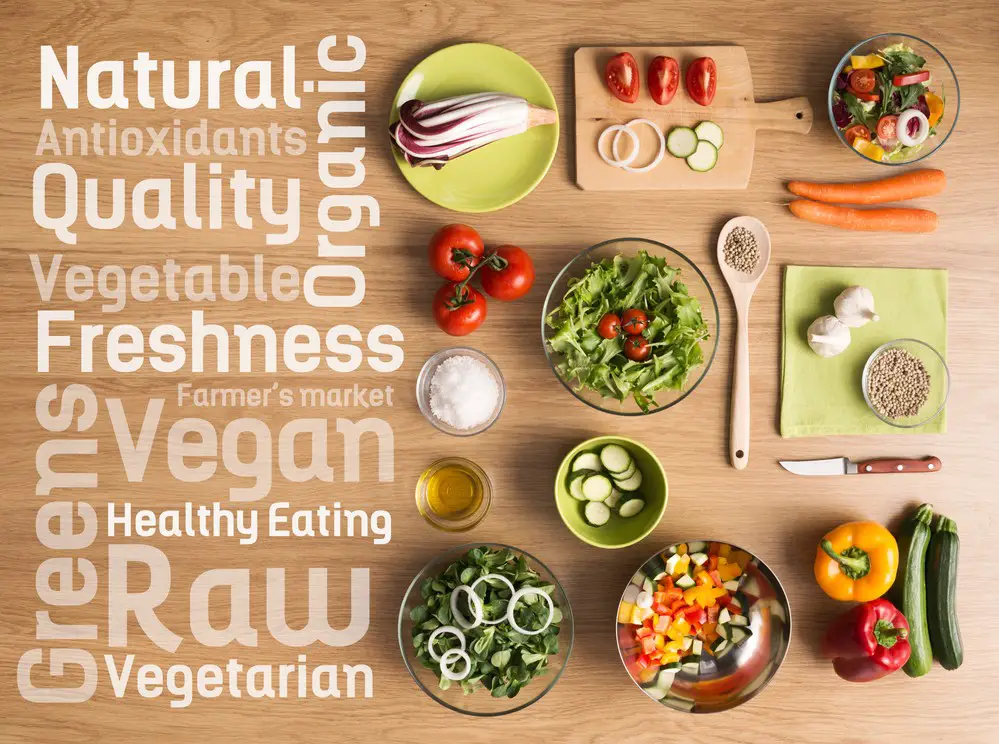Are you pondering over “what can I eat as a vegan”? You’re not alone in this quest for diverse, plant-based eating options. Veganism isn’t just about excluding animal products; it’s a doorway to a world of nutritious and delicious foods.
This guide is tailored to unravel the variety and richness of your vegan choices. From hearty breakfasts to sumptuous dinners, embracing a vegan diet can be a delightful and healthful experience.
Let’s explore the essentials of vegan eating, uncovering the options that await you. Whether you’re a seasoned vegan or new to this lifestyle, this journey promises to be enlightening and delicious.

Vegan Diet Basics
Veganism is more than a diet; it’s a lifestyle choice rooted in compassion and sustainability. At its essence, veganism involves abstaining from all animal products and by-products.
This includes meat, dairy, eggs, and even honey. But it’s not just about what you don’t eat; it’s also about embracing a wide array of plant-based foods.
Vegans choose alternatives like tofu, tempeh, legumes, nuts, seeds, and various fruits and vegetables. This choice often extends beyond diet, influencing clothing, cosmetics, and other lifestyle decisions to reduce animal exploitation and environmental impact.
A well-planned vegan diet can be nutritionally complete and extremely rewarding.
Consuming a diverse range of vegetables, fruits, nuts, seeds, and legumes ensures an intake of various antioxidants and phytonutrients. These compounds are crucial in reducing inflammation, enhancing immune function, and protecting against chronic diseases.
The key is balance and variety. Protein, often a concern for new vegans, can be plentifully found in beans, lentils, chickpeas, tofu, and seitan. These sources are not only rich in protein but also in fiber, vitamins, and minerals.
For essential fatty acids, especially Omega-3s, flaxseeds, walnuts, chia seeds, and hemp seeds are excellent choices. Whole grains, another staple in the vegan diet, provide necessary carbohydrates and additional protein.
Vitamins and minerals are crucial, focusing on Vitamin B12, Vitamin D, iron, calcium, and iodine. While B12 is typically found in animal products, vegans can easily obtain it through fortified foods or supplements. Similarly, calcium can be sourced from fortified plant milk, tofu, and leafy greens like kale and broccoli.
Iron, abundant in legumes, seeds, and whole grains, is best absorbed with Vitamin C-rich foods like citrus fruits, bell peppers, and strawberries.
Incorporating various foods ensures a balanced and healthful vegan diet, rich in all the necessary nutrients to support a healthy lifestyle.
 Essential Vegan Foods
Essential Vegan Foods
Transitioning to a vegan diet opens up a new world of flavors and nutrients. A well-stocked vegan pantry is the foundation of enjoyable and nutritious vegan meals. Let’s explore the key components that comprise the core of vegan eating, ensuring you have everything you need for a balanced diet.
The Vegan Pantry
A vegan pantry should contain various grains, legumes, nuts, seeds, and spices. Rice, quinoa, oats, and whole wheat pasta provide a solid meal base.
Consider incorporating superfood grains like amaranth and buckwheat for additional nutritional benefits. Diverse seed varieties, such as pumpkin and sunflower seeds, offer flavor and health advantages.
Canned or dried beans, lentils, and chickpeas are essential for protein and fiber. Nuts and seeds, such as almonds, chia, and flaxseeds, offer healthy fats and additional protein.
Remember nutritional yeast for a cheesy flavor and B12, along with a range of spices and herbs, to add depth to your dishes.
Powerhouse Foods
Powerhouse foods in a vegan diet include leafy greens, berries, sweet potatoes, and cruciferous vegetables like broccoli and Brussels sprouts. These foods are high in vitamins, minerals, antioxidants, and fiber.
Avocados and coconuts provide healthy fats, while oranges, strawberries, and bell peppers are excellent Vitamin C sources. Including a variety of these foods ensures a rich intake of essential nutrients, supporting overall health and well-being.
Experimenting with different types of fruits and vegetables, like exotic dragon fruit or nutrient-dense kale, can add excitement to your meals while boosting your nutrient intake.

Plant-Based Proteins
Plant-based proteins are vital in a vegan diet, serving as the building blocks for muscle and tissue. Tofu, tempeh, and seitan are versatile protein sources in various dishes.
Legumes like lentils, chickpeas, and black beans are also excellent protein sources, rich in fiber and minerals. Incorporating various protein sources ensures a well-rounded intake of essential amino acids and nutrients.
Quinoa, a complete protein, is a fantastic addition for its versatility and amino acid profile. Spirulina, a nutrient-rich algae, can also be a potent protein supplement in smoothies or salads.
Whole Grains and Legumes
Whole grains and legumes are the energy powerhouses of a vegan diet. Brown rice, barley, and whole wheat provide complex carbohydrates that sustain energy.
Legumes, including beans, lentils, and peas, are excellent protein sources rich in fiber, iron, and B vitamins. These foods help maintain stable blood sugar levels and provide a feeling of fullness, aiding in healthy digestion and weight management.

Fruits and Vegetables: The Colorful Palette of Veganism
Fruits and vegetables are the cornerstones of a vibrant vegan diet. They provide a wide array of vitamins, minerals, and antioxidants essential for maintaining good health.
Dark leafy greens, such as spinach and kale, are rich in iron and calcium. Berries, apples, and bananas offer natural sweetness and fiber. Vegetables like carrots, beets, and zucchini bring color and texture to meals, along with essential nutrients like Vitamin A and potassium.
Eating a rainbow of fruits and vegetables ensures a diverse intake of vital nutrients, making every vegan meal both nutritious and visually appealing.
Avoiding Non-Vegan Foods
While embracing veganism, being vigilant about non-vegan ingredients that can sneak into seemingly plant-based products is crucial.
Hidden Non-Vegan Ingredients: Label Reading Skills
Developing label-reading skills is vital for vegans to identify hidden animal-derived ingredients. Common ingredients include:
- Gelatin (often found in gummy candies and desserts).
- Casein (a milk protein in some dairy-free cheeses).
- Certain food colorings are derived from insects.
Also, watch out for less apparent ingredients like albumin, whey, and certain emulsifiers. Familiarizing yourself with these terms helps you make informed choices and maintain a vegan diet.

Common Misconceptions: What Vegans Don’t Eat
There are several misconceptions about what vegans can or cannot eat. For instance, honey is often debated; however, most vegans avoid it as it’s an animal by-product.
Similarly, some wines and beers are clarified using animal products, making them non-vegan. Another common error is assuming that all bread is vegan; however, some bread contains dairy or eggs.
Being aware of these nuances helps in making more accurate vegan choices.
Overcoming Social Situations: Tips for Staying Vegan
Staying vegan in social situations requires a bit of planning and communication. Inform hosts of your dietary preferences, and consider sharing a vegan dish.
When dining out, research restaurants beforehand to ensure they offer vegan options. Don’t hesitate to ask questions about menu items to confirm they’re vegan.
Being prepared and proactive makes social dining enjoyable and stress-free for everyone involved.
Delicious Vegan Meal Ideas
Adopting a vegan diet doesn’t mean sacrificing flavor or variety. It opens up a world of creative and delicious meal options for every time of the day.
From energizing breakfasts to indulgent snacks and desserts, vegan cooking can be satisfying and diverse. Let’s dive into some meal ideas that will keep your vegan menu exciting and delightful all year round.
Energizing Breakfasts
Begin your day with a burst of energy from vegan breakfasts. Think chia seed pudding, oatmeal topped with nuts and fruits, or a smoothie bowl rich in flavors and nutrients.
Try tofu scramble with spinach and mushrooms or avocado toast on whole grain bread for a savory start. These breakfasts are delicious and fuel you for the day ahead.
Lunches
For lunch, quick and nutritious is the way to go. Salads with quinoa, chickpeas, and fresh veggies make a light yet filling meal.
Wraps filled with hummus, roasted vegetables, and greens are perfect for on-the-go. Or, enjoy a comforting bowl of lentil soup or a hearty veggie burger. These lunches are designed to be both satisfying and healthful.
Dinner
Dinner time is perfect for exploring the diversity of vegan cuisine. Experiment with vegan versions of your favorite dishes, like plant-based lasagna, stir-fried tofu with vegetables, or a hearty vegan chili.
Ethnic cuisines, such as Indian or Thai, offer many vegan options full of flavor and spices. These dinners are nourishing and a delight to the taste buds.
Snacks and Desserts
Vegan snacks and desserts can be both indulgent and guilt-free. Enjoy baked sweet potato fries, fruit salads, or nut and seed mixes for a quick snack.
Savor vegan brownies, fruit sorbets, or coconut milk-based ice cream for dessert. These treats are perfect for satisfying your sweet tooth while adhering to a vegan lifestyle.
As the seasons change, so do the ingredients and flavors, making it an exciting journey through the year.
Seasonal Specials
Embrace the seasons with vegan dishes that highlight seasonal produce. Spring might feature fresh salads with asparagus and peas, while summer calls for berry-based desserts and grilled vegetable skewers.
In autumn, enjoy pumpkin soups and roasted root vegetables, and in winter, warm up with hearty stews and spiced baked goods. Seasonal eating keeps your vegan diet varied and exciting throughout the year.

Benefits of a Vegan Diet
Adopting a vegan diet brings many benefits, not just for individual health but also for the planet and its inhabitants. This section delves into the various advantages of veganism, from its impact on personal health and the environment to its ethical implications.
Weight Management and Disease Prevention
A vegan diet is typically lower in calories and saturated fats, aiding in weight management and reducing obesity risk. High in fiber, it promotes better digestion and heart health.
Studies link vegan diets to lower risks of heart disease, type 2 diabetes, and certain cancers, thanks to their rich nutrient profile.
Enhanced Physical Fitness and Energy
Many athletes and fitness enthusiasts report increased energy and quicker recovery times when following a vegan diet. The abundance of antioxidants and nutrients in plant-based foods can enhance physical performance and stamina.
Improved Digestive Health
A diet high in fruits, vegetables, and whole grains provides essential fiber, which is vital for digestive health. This can lead to improved gut health and a reduction in digestive disorders.
Skin and Aging Benefits
Vegan diets, rich in vitamins, minerals, and antioxidants, can contribute to healthier skin. The anti-inflammatory properties of plant-based foods may help reduce acne and promote a youthful skin appearance.
Environmental Impact: Reducing Carbon Footprint
Veganism significantly reduces one’s carbon footprint. Animal agriculture is a major contributor to greenhouse gas emissions. By choosing plant-based options, vegans help reduce environmental degradation and conserve biodiversity.
Water Conservation
Animal farming is water-intensive. Adopting a vegan diet helps conserve water resources, which is crucial for environmental sustainability.
Contribution to Global Food Security
Plant-based diets are more efficient in terms of land and resource use, potentially playing a role in addressing global food security challenges.
Vegan Eating Made Easy
Adopting a vegan lifestyle can be simple and enjoyable, even for those with a busy schedule or a tight budget. Effective meal planning and prepping are key for busy vegans.
Setting aside weekly time to plan meals and prepare ingredients can make daily cooking faster and less stressful. Batch cooking and freezing portions ensure that you always have a healthy, vegan meal ready. This approach not only saves time but also reduces food waste.
For those mindful of their budget, veganism can be surprisingly affordable. Focusing on whole foods like grains, beans, and seasonal vegetables, rather than expensive processed vegan products, keeps costs down.
Buying in bulk, choosing local produce, and growing some of your herbs and vegetables can further reduce expenses. Veganism doesn’t have to be a luxury; it can be accessible and sustainable for all.
Incorporating vegan substitutes into your diet adds variety and familiarity. Nutritional yeast can replace cheese flavors, while tofu and tempeh are excellent stand-ins for meat in many recipes.
Plant-based milks and yogurts are readily available for dairy alternatives. These substitutes mimic the textures and flavors of their non-vegan counterparts and often provide additional health benefits, making vegan eating easy and enjoyable.
Exploring Vegan Food Options
Veganism opens up a diverse world of culinary experiences, allowing you to explore international flavors and dining-out options while keeping up with the latest superfoods and trends. Each aspect of vegan dining brings its own unique set of delights and discoveries.
Exploring International Vegan Cuisines
International vegan cuisines offer a treasure trove of flavors. From the spicy curries of India to the fresh, herb-filled dishes of the Mediterranean, there’s a vast array of plant-based dishes globally. These cuisines introduce new flavors and different ways to use familiar ingredients.

A Vegan’s Guide to Restaurants
It is becoming easier for vegans to find suitable options in restaurants. Nowadays, many eateries provide vegan menus, or they can adjust their dishes to fit vegan diets.
To avoid any inconvenience, it is advisable to research restaurants beforehand and communicate your dietary requirements. This will ensure a hassle-free and pleasurable dining experience.
Superfoods and Trends
Incorporating superfoods into your diet is a great way to add nutritional value and variety. Foods like quinoa, chia seeds, kale, and acai are nutrient-dense and versatile.
Keeping an eye on vegan trends can introduce you to innovative ingredients and creative ways to enhance your meals, ensuring your vegan diet remains vibrant and enjoyable.
What to Eat and Not Eat
Understanding what to eat and what to avoid is fundamental in veganism.
The vegan checklist is straightforward: eat fruits, vegetables, legumes, grains, nuts, and seeds while avoiding all animal products, including meat, dairy, eggs, and honey. Processed foods require careful label reading to identify hidden animal-derived ingredients.
Addressing common challenges, such as finding sufficient protein sources and maintaining a balanced diet, is crucial. Plant-based proteins like lentils, tofu, tempeh, and a variety of whole foods ensure a well-rounded diet. Supplementing with B12 and other nutrients, if necessary, supports overall health.
Debunking myths is also crucial. Contrary to popular belief, a vegan diet can be rich in protein, iron, and calcium. It’s a misconception that vegan diets are inherently lacking in these nutrients.
With proper planning and knowledge, a vegan diet can be nutritionally complete and satisfying, debunking the myths surrounding it.
Final Thoughts
A vegan lifestyle offers numerous benefits, positively impacting health, the environment, and ethical considerations. As you continue your veganism exploration, various resources and communities are available.
Online forums, social media groups, and local gatherings provide a platform for sharing experiences, advice, and recipes. These networks are invaluable for support and inspiration, helping you navigate the nuances of vegan living.
Engaging with fellow vegans can enrich your experience, making your dietary choice not just a habit but a rewarding part of your daily life.

